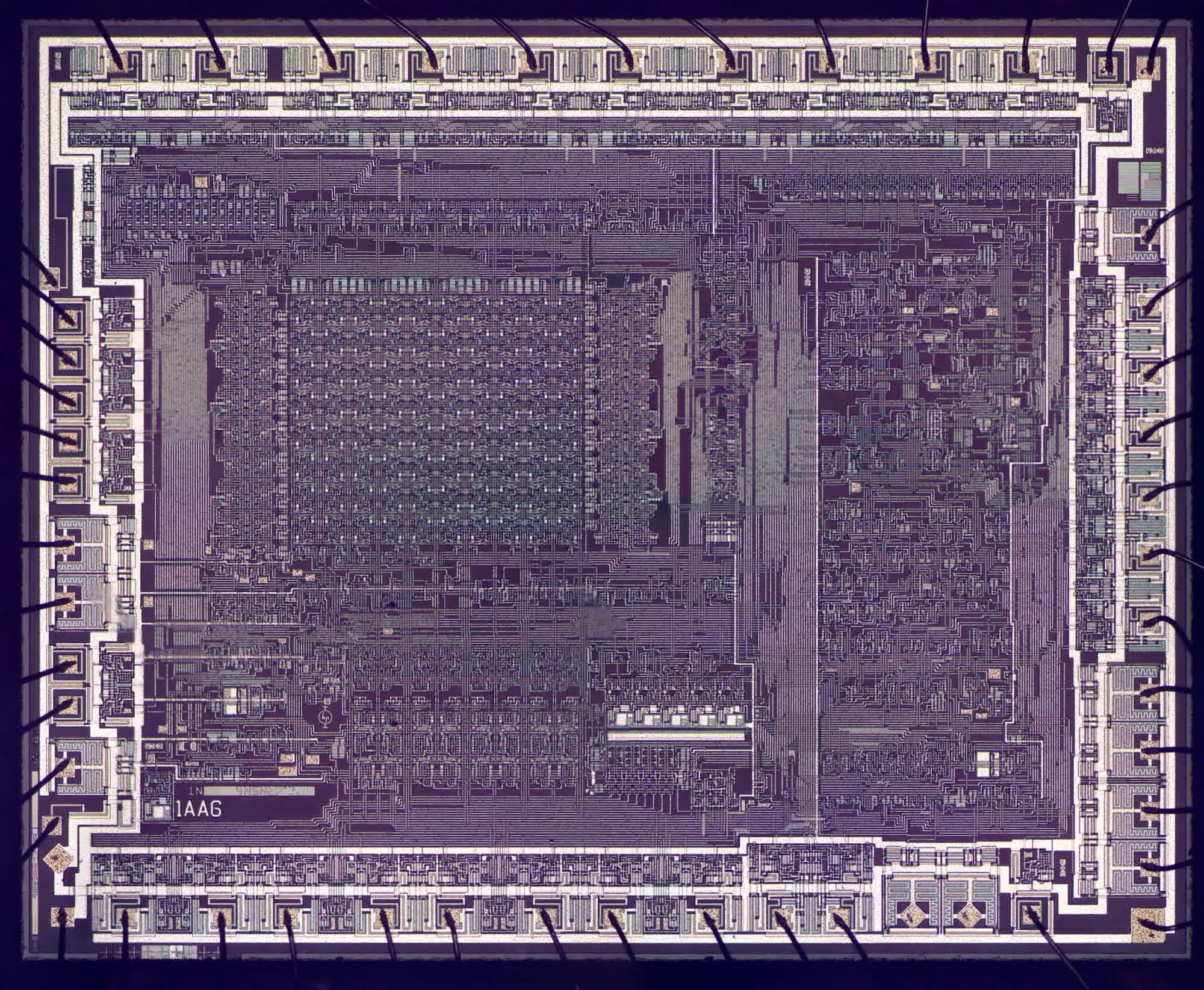Unearthed: Unusual Silicon-on-Sapphire Chip in Ancient HP Floppy Disk Drive
Ken Shirriff discovered an obsolete manufacturing technology while repairing an eight-inch HP floppy drive. The chip is unique and partly transparent.
Ken Shirriff is a passionate enthusiast of reverse engineering integrated circuits and enjoys restoring vintage computers and devices. Recently, while repairing an eight-inch HP floppy drive, he stumbled upon an obsolete manufacturing technology that was nearly lost to time.
Shirriff shared on his blog that the old floppy drive had a broken interface chip, prompting him to decap it and take photos. What he found was an unusual substrate, consisting of a sapphire base with silicon elements and metal wiring on top. This "silicon-on-sapphire" chip was designed to function as an interface between HP's interface bus (HP-IB) and the Z80 processor, which acts as the central hub in the floppy drive controller.
The silicon-on-sapphire chip, known as a PHI (Processor-to-HP-IB Interface) component, was used in various HP products to manage the bus protocol and buffered data between the interface bus and a device's microprocessor. Shirriff explained that the sapphire substrate gave the chip unique capabilities, such as reduced capacitance between transistors, improved performance, and protection against radiation or low-impedance short circuits.
This silicon-on-sapphire configuration had been in use since 1963 or earlier, including in spacecraft like the Galileo probe, due to its natural hardening capabilities against radiation. Shirriff compared the PHI chip to other processors from the 70s, noting that HP's MC2 16-bit processor from 1977 utilized silicon-on-sapphire technology and had 10,000 transistors, running at 8 megahertz on just 350 mW of power. In comparison, the Intel 8086 16-bit CPU from 1978 was implemented on a "regular" silicon substrate using NMOS instead of the CMOS manufacturing process, with 29,000 transistors, running at 5 megahertz initially, and consuming up to 2.5 watts of power.
While silicon-on-sapphire substrates provided advantages in performance and power consumption, they were not as densely packed with transistors as silicon ones. Additionally, "crystal incompatibilities" between silicon and sapphire made manufacturing challenging, resulting in a nine percent yield for HP. This difficulty likely played a significant role in establishing silicon as the material of choice for IC manufacturing in subsequent years.











Comments on Unearthed: Unusual Silicon-on-Sapphire Chip in Ancient HP Floppy Disk Drive